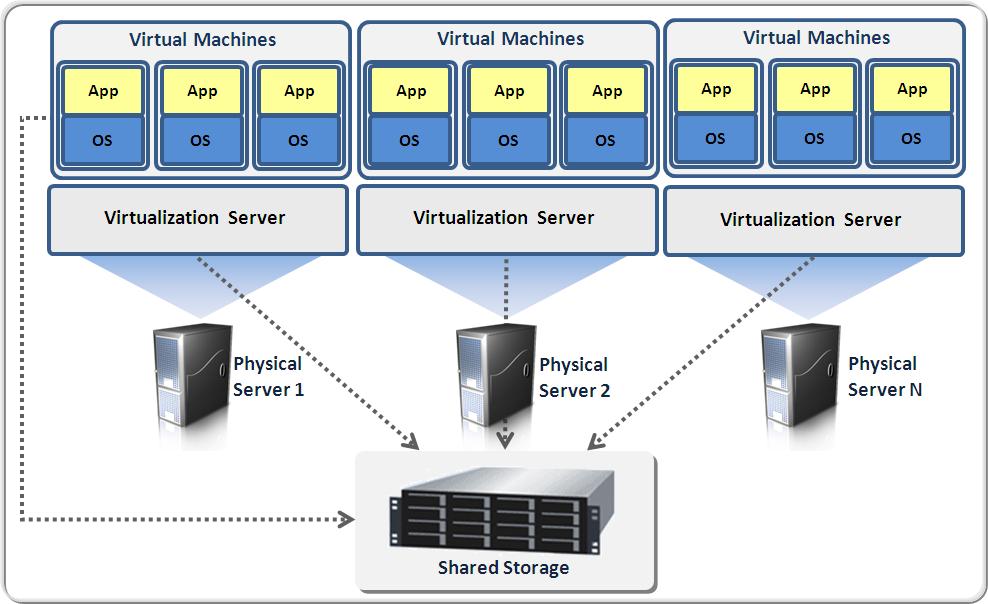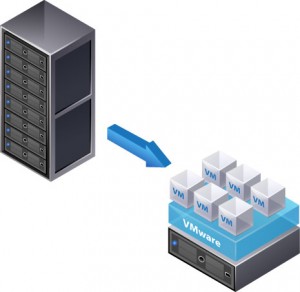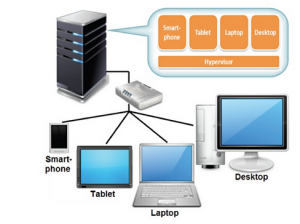Virtualization technology is possibly the single most important issue in IT and has started a top to bottom overhaul of the computing industry. The growing awareness of the advantages provided by virtualization technology is brought about by economic factors of scarce resources, government regulation, and more competition.
Virtualization is being used by a growing number of organizations to reduce power consumption and air conditioning needs and trim the building space and land requirements that have always been associated with server farm growth. Virtualization also provides high availability for critical applications, and streamlines application deployment and migrations. Virtualization can simplify IT operations and allow IT organizations to respond faster to changing business demands.
The socio-political ramifications of global warming requiring good corporate citizens to meet greenhouse gas reduction targets, creates an added incentive for virtualization.
What is Virtualization?
Virtualization is a combination of software and hardware engineering that creates Virtual Machines (VMs) – an abstraction of the computer hardware that allows a single machine to act as if it where many machines.
- Without VMs: A single OS owns all hardware resources
- With VMs: Multiple OSes, each running its own virtual machine, share hardware resources
- Virtualization enables multiple operating systems to run on the same physical platform
Advantages of Using Virtualization
Today’s IT intensive enterprise must always be on the lookout for the latest technologies that allow businesses to run with fewer resources while providing the infrastructure to meet today and future customer needs. Virtualization utilizing Intel Virtualization Technology is the cutting edge of enterprise information technology. Intel is closely working with VMware, XENSource, Jaluna, Parallels, tenAsys, VirtualIron, RedHat, Novell and other VMM developers.
It is not unusual to achieve 10:1 virtual to physical machine consolidation. This means that ten server applications can be run on a single machine that had required as many physical computers to provide the unique operating system and technical specification environments in order to operate. Server utilization is optimized and legacy software can maintain old OS configurations while new applications are running in VMs with updated platforms.
Although a server supporting many VMs will probably have more memory, CPUs, and other hardware it will use little or no more power and occupy the same physical space reducing utilities costs and real estate expenditures.
Testing and development
Use of a VM enables rapid deployment by isolating the application in a known and controlled environment. Unknown factors such as mixed libraries caused by numerous installs can be eliminated. Severe crashes that required hours of reinstallation now take moments by simply copying a virtual image.
Dynamic Load Balancing and Disaster Recovery
As server workloads vary, virtualization provides the ability for virtual machines that are over utilizing the resources of a server to be moved to underutilized servers. This dynamic load balancing creates efficient utilization of server resources.
Disaster recovery is a critical component for IT, as system crashes can create huge economic losses. Virtualization technology enables a virtual image on a machine to be instantly re-imaged on another server if a machine failure occurs.
Multinational flexibility provides seamless transitions between different operating systems on a single machine reducing desktop footprint and hardware expenditure.
Improved System Reliability and Security
Virtualization of systems helps prevent system crashes due to memory corruption caused by software like device drivers. VT-d for Directed I/O Architecture provides methods to better control system devices by defining the architecture for DMA and interrupt remapping to ensure improved isolation of I/O resources for greater reliability, security, and availability.
Techplus can design, implement and consult on different virtualization solutions as per the requirement and architecture of the business so that Services given to clients can be available at any time required .



